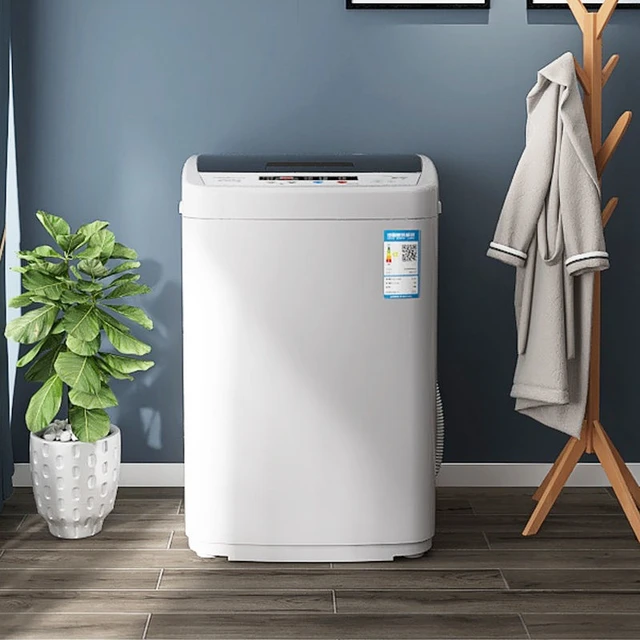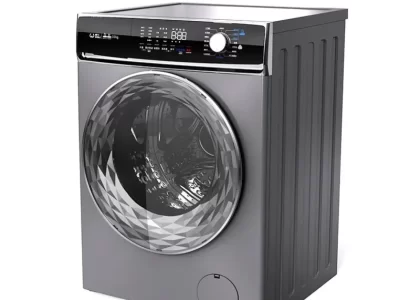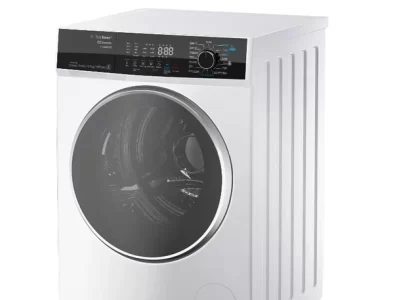 Introduction:
Introduction:
Cleaning our shoes is a common task to maintain their appearance and hygiene. However, the question arises whether putting shoes in the washing machine can damage them. In this comprehensive guide, we will explore the topic, discussing the potential risks, suitable footwear for machine washing, and best practices. By understanding the factors involved, you can make an informed decision about washing your shoes in the machine.
Potential Risks of Machine Washing Shoes
Material Damage:
Certain materials, such as delicate fabrics or leather, can be damaged in the washing machine.
High-speed agitation and hot water can cause shrinking, warping, or even disintegration of the shoe material.
It may also cause damage to the washing machine, causing it to stop spinning.
Structural Damage:
Shoes with delicate or intricate structures, such as glued or stitched parts, may become loose or detached during machine washing.
The forceful movement and water pressure can weaken or break the structural integrity of the shoes.
Sole and Insole Damage:
The washing machine’s impact can cause detachment of insoles or damage to the shoe’s sole, affecting comfort, support, and overall functionality.
 Washing shoes in a washing machine can potentially have negative effects on the machine:
Washing shoes in a washing machine can potentially have negative effects on the machine:
Washing shoes in a washing machine can potentially have negative effects on the machine. Here are some potential drawbacks:
Damage to the drum:
Shoes, especially heavier ones or those with hard soles, can cause damage to the washing machine drum. The constant pounding and spinning motion during the wash cycle can lead to dents, scratches, or even dislodging of the drum.
Unbalanced load:
Shoes can create an unbalanced load inside the washing machine, causing it to shake, vibrate excessively, or even move around. This can lead to damage to the machine’s internal components, such as the suspension system or motor.
Damage to other laundry:
Washing shoes along with other laundry items can result in damage to the clothing or other delicate fabrics. Shoes may cause excessive friction or snagging, leading to tears, stretched fabric, or pulled threads.
Malfunction or breakage:
The excessive strain and impact of washing shoes can potentially cause the washing machine to malfunction or break down. This can result in costly repairs or the need for a replacement.
Hygiene concerns:
Shoes can introduce dirt, debris, or potential contaminants into the washing machine. This can affect the cleanliness and hygiene of subsequent loads, potentially transferring dirt or odors to other laundry items.
To avoid these potential issues, it is recommended to clean shoes separately and by hand. Use a brush or cloth to remove dirt and stains, and consider using specialized cleaning products for specific shoe materials. This will help preserve both your shoes and your washing machine, ensuring they both last longer and perform optimally.
 Suitable Footwear for Machine Washing
Suitable Footwear for Machine Washing
Athletic Shoes:
Many athletic shoes, especially those designed for sports like running or hiking, are suitable for machine washing.
They are often made of durable materials that can withstand the rigors of machine washing.
Canvas Shoes:
Canvas shoes, such as sneakers or casual footwear, are generally safe for machine washing.
Canvas is a resilient material that can handle the agitation and water pressure without significant damage.
Rubber or Plastic Shoes:
Shoes made of rubber or plastic, such as rain boots or garden shoes, can usually be machine washed without adverse effects.
These materials are more resistant to water and can withstand the washing machine’s conditions.
Best Practices for Machine Washing Shoes
Pre-Treatment:
Before washing, remove any loose dirt or debris from the shoes.
Spot treat stains or heavily soiled areas with a mild detergent or stain remover.
Protecting the Shoes:
Place the shoes in a mesh laundry bag or pillowcase to protect them during the wash cycle.
This helps prevent excessive agitation and reduces the risk of damage.
Gentle Wash Cycle:
Select a gentle or delicate cycle with cold or lukewarm water to minimize damage.
Avoid using hot water or high-speed agitation, which can be harsh on shoes.
Mild Detergent:
Use a small amount of mild detergent specifically designed for delicate fabrics or shoes.
Harsh chemicals or excessive detergent can cause discoloration or damage to the shoe material.
Air Drying:
After washing, air dry the shoes at room temperature.
Avoid direct sunlight or heat sources, as they can cause the shoes to warp or crack.
Alternative Cleaning Methods
Handwashing:
Handwashing remains the safest method for cleaning shoes, especially those with delicate materials or structures.
Use a soft brush, mild detergent, and lukewarm water to gently clean the shoes.
Spot Cleaning:
For minor stains or localized dirt, spot cleaning with a cloth or sponge dipped in a mild detergent solution is effective.
This method allows you to target specific areas without subjecting the entire shoe to machine washing.
 Properly using a washing machine:
Properly using a washing machine:
Properly using a washing machine involves a few essential steps. Here’s a guide on how to use a washing machine correctly:
Sort your laundry:
Separate your laundry based on color, fabric type, and level of dirtiness. This will help prevent color bleeding and ensure optimal cleaning.
Read the instructions:
Familiarize yourself with the specific settings and features of your washing machine by carefully reading the instruction manual. Pay attention to any special instructions or limitations for your machine.
Pre-treat stains:
Prior to loading the laundry, pre-treat any stains or heavily soiled areas using a stain remover or by soaking in a mixture of water and detergent.
Load the machine:
Open the washing machine and load the clothes, ensuring not to overload the drum. Overloading can affect the cleaning efficiency and potentially damage the machine. Leave enough space for the clothes to move freely.
Add detergent:
Measure the appropriate amount of detergent based on the load size, water hardness, and level of dirtiness. Follow the manufacturer’s instructions on the detergent packaging for accurate measurements.
Select the settings:
Choose the appropriate wash cycle, temperature, and spin speed based on the fabric type and level of dirtiness. Use cold water for delicate fabrics and warm or hot water for heavier soiling. Select a gentle cycle for delicate items and a normal or heavy-duty cycle for more durable fabrics.
Start the wash cycle:
Close the washing machine door and start the wash cycle. Note the estimated time for completion, and avoid interrupting the cycle once it has started.
Properly handle the machine:
During the wash cycle, avoid leaning on or sitting on the machine, as this can cause imbalance and vibrations. Also, avoid opening the machine mid-cycle unless it has a pause function.
Remove the laundry promptly:
Once the cycle is complete, promptly remove the laundry from the machine to prevent wrinkles and odors. Do not let wet laundry sit in the machine for an extended period.
Clean the machine:
Regularly clean and maintain your washing machine. This includes wiping the drum, detergent dispenser, and door seal, as well as running periodic cleaning cycles using appropriate cleaning agents to remove any buildup or odors.
 Conclusion:
Conclusion:
Does putting shoes in the washing machine damage it?While machine washing shoes can be convenient, it is not without risks. Understanding the potential damage and suitable footwear for machine washing is crucial. Use the washing machine correctly and rationally,By following the best practices outlined in this comprehensive guide, you can minimize the risk of damage and effectively clean your shoes. However, always consider the shoe’s material, structure, and manufacturer’s recommendations before deciding on the cleaning method. When in doubt, handwashing or spot cleaning can be a safer alternative to preserve the shoe’s condition and longevity. With proper care, your shoes will maintain their appearance and functionality for an extended period.




